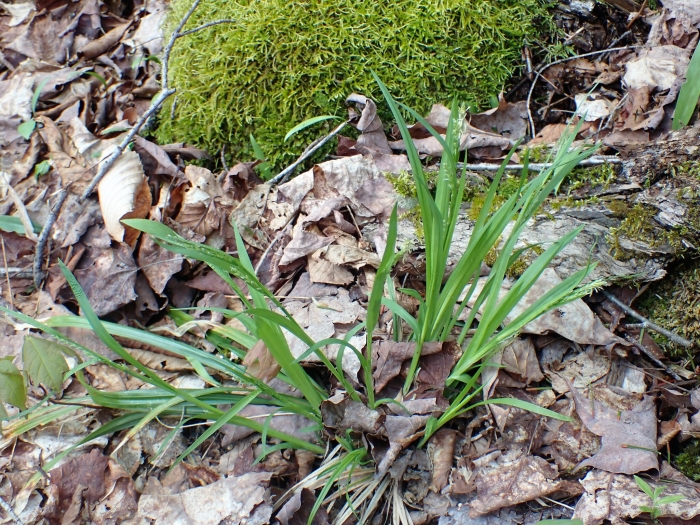Nerveless Woodland Sedge
(Carex leptonervia)
Nerveless Woodland Sedge (Carex leptonervia)
/
/

© Louis Imbeau
CC BY 4.0
Image By:
© Louis Imbeau
Recorded By:
Copyright:
CC BY 4.0
Copyright Notice:
Photo by: © Louis Imbeau | License Type: CC BY 4.0 | License URL: http://creativecommons.org/licenses/by/4.0/ | Uploader: imbeaul | Publisher: iNaturalist |

























Estimated Native Range
Summary
Carex leptonervia, commonly known as Nerveless Woodland Sedge, is a perennial herbaceous plant native to rich, mesic deciduous forests and shaded floodplain woodlands in eastern North America, particularly in eastern Canada and the northeastern United States. It typically forms dense clumps reaching 12 to 18 inches (30 to 45 cm) in height and width. This sedge is characterized by its fine-textured, grass-like leaves and inconspicuous greenish-brown flowers that appear in late spring to early summer. The flowers are not showy, but the plant’s foliage provides a lush groundcover throughout the growing season.
Nerveless Woodland Sedge is valued for its ability to thrive in shady conditions and its use as a ground cover in woodland gardens, shaded borders, and naturalized areas. It is low-maintenance, requiring minimal care once established, and is an excellent choice for erosion control on slopes. It prefers consistently moist, well-drained soils rich in organic matter and can tolerate a range of light conditions from full shade to partial sun. While not commonly afflicted by diseases or pests, it can suffer from root rot if planted in poorly drained soils. This sedge is not known for aggressive roots or invasiveness, making it a safe choice for gardeners seeking a well-behaved native plant.CC BY-SA 4.0
Nerveless Woodland Sedge is valued for its ability to thrive in shady conditions and its use as a ground cover in woodland gardens, shaded borders, and naturalized areas. It is low-maintenance, requiring minimal care once established, and is an excellent choice for erosion control on slopes. It prefers consistently moist, well-drained soils rich in organic matter and can tolerate a range of light conditions from full shade to partial sun. While not commonly afflicted by diseases or pests, it can suffer from root rot if planted in poorly drained soils. This sedge is not known for aggressive roots or invasiveness, making it a safe choice for gardeners seeking a well-behaved native plant.CC BY-SA 4.0
Plant Description
- Plant Type: Grass
- Height: 1.5-2.5 feet
- Width: 1-1.5 feet
- Growth Rate: Moderate
- Flower Color: N/A
- Flowering Season: Spring, Summer
- Leaf Retention: Deciduous, Semi-deciduous
Growth Requirements
- Sun: Part Shade, Full Shade
- Water: Medium
- Drainage: Medium, Slow
Common Uses
Bank Stabilization, Low Maintenance, Water Garden
Natural Habitat
Rich, mesic deciduous forests and shaded floodplain woodlands
Other Names
Common Names: Fine-Nerved Sedge, Finely-Nerved Sedge, Few-Nerved Wood Sedge, Nervous Sedge
Scientific Names: , Carex leptonervia, Carex blanda var. varians, Carex laxiflora f. varians, Carex laxiflora var. leptonervia, Carex laxiflora var. varians, Carex varians,
GBIF Accepted Name: